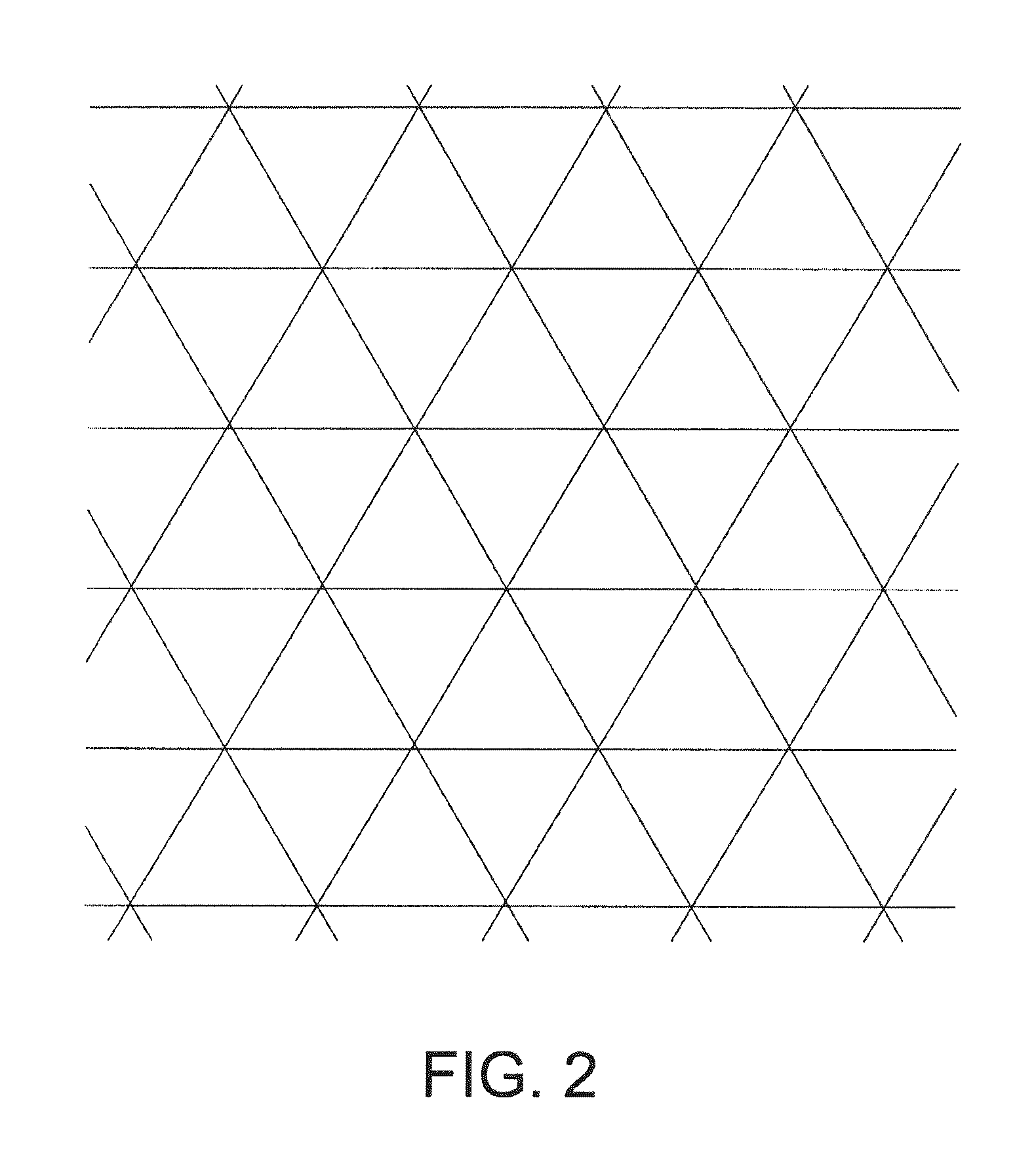Systems for designing a foot orthotic
a technology for foot and orthotic, applied in the direction of instruments, insoles, force/torque/work measurement devices, etc., can solve the problems of little to no standardization in the methods used to treat mechanically induced foot pain, dissipation of the force required, and inability to control the mechanics of the foot with accommodative orthosis made of eva and similar soft materials
- Summary
- Abstract
- Description
- Claims
- Application Information
AI Technical Summary
Benefits of technology
Problems solved by technology
Method used
Image
Examples
example 1
Measurement of a Patient's Foot to Obtain a Digital Anatomy
A patient experiencing pain in the left foot during physical activity is provided. The patient is seated and her bare foot is placed, under minimal weight-bearing conditions, on a foot platform having a pin bed comprised of an array of independently moveable pins. The pins within the pin bed are moved up toward the plantar surface of the foot by means of servos under control of a computer. A baseline reading of the patient's foot is acquired with the pins gently touching the plantar surface of the foot. The “ball” of the heel and first and fifth metatarsal heads ideally results in 0.0 mm pin elevation. In some embodiments, the pins are flush with the surface of the bed with the baseline reading taken when a small amount of pressure (that will not displace any soft (issue) is applied to the pins to elevate them just enough to touch the plantar surface of the foot. Pin height is displayed in small increments (0.10 to 0.05 mm) ...
example 2
Analysis of a Digital Anatomy
A patient's foot is placed on a foot platform comprising a pin bed. A pressure is applied to the pins in the bed to compress the soft tissue on the plantar surface of the foot to create a uniform density of tissue per cubic centimeter at each pin head surface. The computer program collects pin height for each pin and analyzes the information to determine bone positions of the foot, first assessing the shape of the interior surface of the calcaneus. As seen in FIG. 4A, the inferior surface of the calcaneus in a healthy or restored foot is a circular shape. If the calcaneus is not in an ideal position, the shape will appear as an oval indicating that the calcaneus is plantar flexed, as visible in the contour plot of the foot in FIG. 5A. The computer then uses this data to conduct an analysis of the foot, using the following exemplary technique based on the digital image shown FIG. 6A.
The computer constructs four lines starting with an image of scanned foot...
example 3
Analysis of a Digital Anatomy
A digital anatomy of a foot is obtained as described in Example 1. Three series of calculations are performed by the system software to design a restorative foot orthotic device.
First, the calcaneocuboid (CC) and LCNC congruencies are calculated by drawing and evaluating several lines which transect 1) the long axis of the calcaneus footprint, 2) the axis formed from the bisection of the proximal and distal surfaces of the cuboid, 3) the space between the fourth and fifth rays (which will exhibit a deviation if the calcaneocuboid joint is dysfunctional). Additionally, a reduction line is drawn through the curve of the metatarsal heads that should bisect a line going through the lateral column in a nearly perpendicular fashion. Second, the software program defines the angle of the calcaneus and defines the heel cup. Third, the software program delineates the area under the midfoot to be supported by LCNC Dynamic Post, now to be described with reference to...
PUM
 Login to View More
Login to View More Abstract
Description
Claims
Application Information
 Login to View More
Login to View More - R&D
- Intellectual Property
- Life Sciences
- Materials
- Tech Scout
- Unparalleled Data Quality
- Higher Quality Content
- 60% Fewer Hallucinations
Browse by: Latest US Patents, China's latest patents, Technical Efficacy Thesaurus, Application Domain, Technology Topic, Popular Technical Reports.
© 2025 PatSnap. All rights reserved.Legal|Privacy policy|Modern Slavery Act Transparency Statement|Sitemap|About US| Contact US: help@patsnap.com



